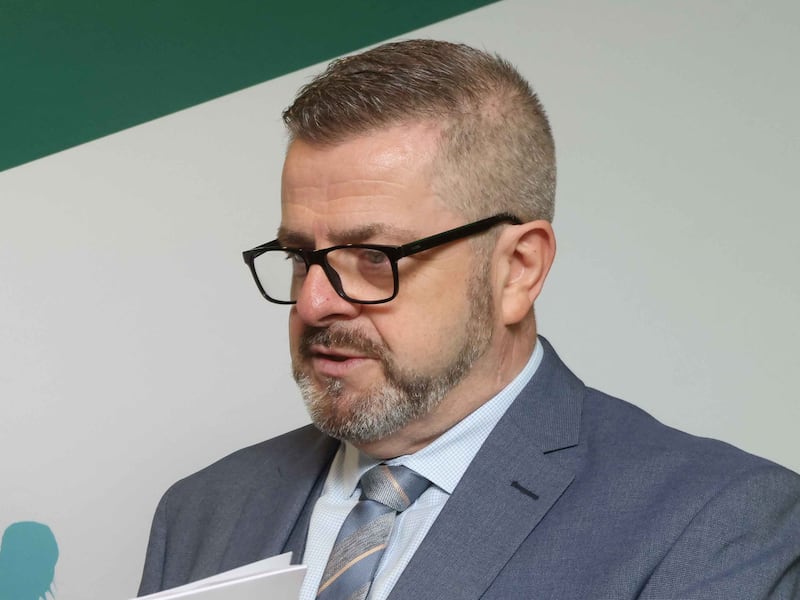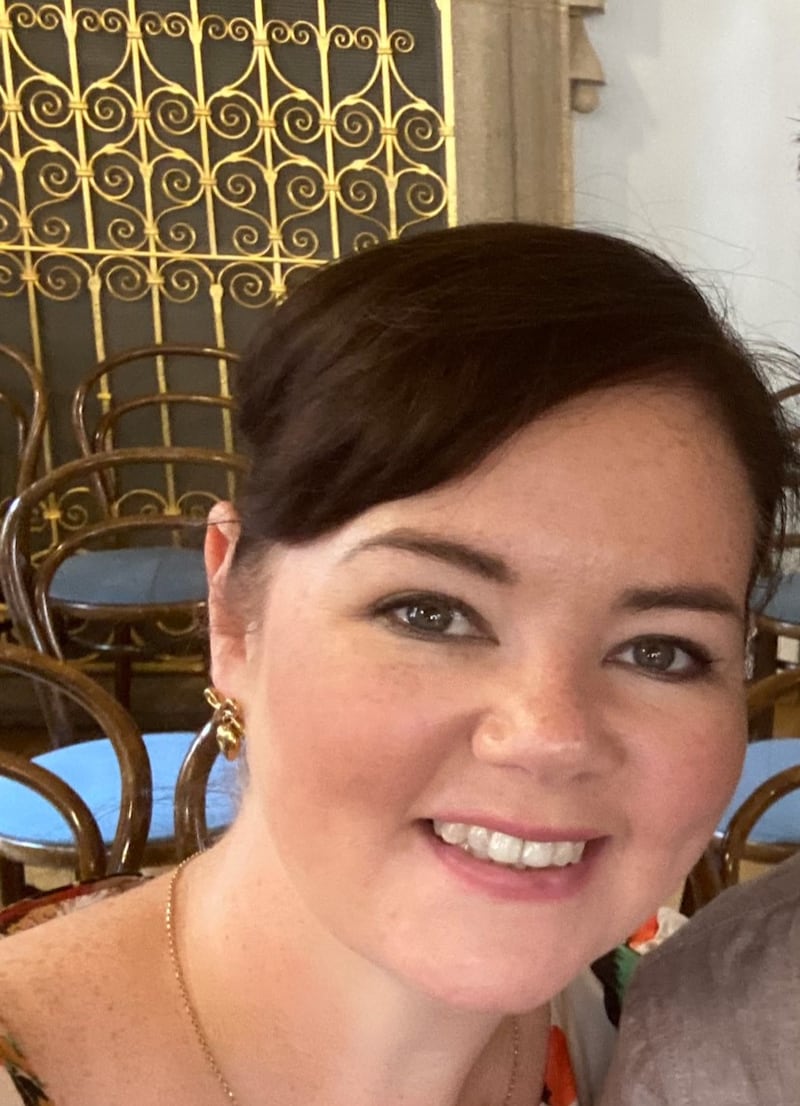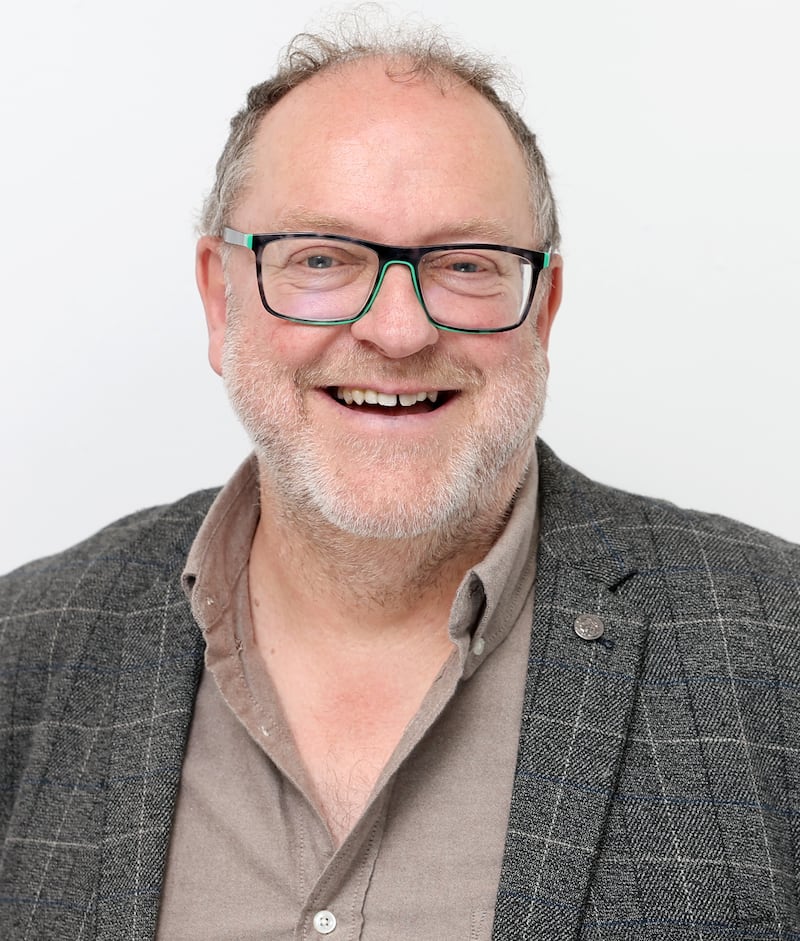The “complex acetabular fracture in bed 11” that medical staff talked about was Maureen Nolan’s beloved husband Gabriel, who had shattered his pelvis in a motorbike crash.
It annoyed her that they referred to him by his condition, rather than using his name. Nor did they want to hear what a great teaching case he would make for medical students.
For her, this was an example of where the health service was falling short of the ideal of person-centred healthcare. That concept has been a subject close to her heart over many years, not just when caring for her husband, or as a patient herself, but in her job as an senior executive officer with the Health Service Executive (HSE) in Galway.
Even before Gabriel’s accident in October 2014, she was involved in Patients for Patient Safety Ireland (PFPSI), a World Health Organisation initiative that encourages healthcare providers to listen and learn from patients and their families. But what she observed from being at her husband’s side “definitely put fire in the belly, to try and make change”, she says.
“I have a unique vantage point, I think, in that I’m not clinical, but I do understand the [health] system. But I also see it from the patient’s perspective, which is what is driving my work as a volunteer and a speaker at conferences. How can we make change? How can we stop this happening to others?”
Gabriel, she says, looks at every issue not as a “problem” but as “a solution opportunity”. She has tried to be his voice, sharing elements of his story and reflecting concerns of fellow PFPSI volunteers, some of whom have lost loved ones through systemic failings. “My biggest thing is that clinicians and healthcare professionals [should] actually listen to the patient because they have a lot of the answers.”
After the motorbike crash on a Monday, Gabriel had surgery in University Hospital Galway on the Tuesday and was transferred that night to Tallaght University Hospital in Dublin for rebuilding of his shattered pelvis, with major surgery there on the Thursday.
“The communication between the two hospitals was non-existent; they had different systems,” says Maureen. Tests already done were repeated and the Blood Bikes services had to be used to bring up some of his scans.
[ Health’s Angels: Blood Bikes providing a vital service to HSEOpens in new window ]
Over time, there were “so many little failings”. These included Gabriel’s wait for interventional radiology being unnecessarily prolonged by his referral dropping out of the appointments system, not once but twice. “It’s that kind of frustration of systems not talking, but also teams obviously not driving that and not being aware of the consequence for somebody.”
Maureen Nolan and her husband Gabriel. ‘My biggest thing is that clinicians and healthcare professionals should listen to the patient because.’ Photograph: Joe O’Shaughnessy
It took two years before the lymphoedema that he developed from the cutting of blood and lymphatic vessels during surgeries was diagnosed; in the meantime he was being given injections into his joints because medics believed it was pain issues. But through their own research, the Nolans figured it was lymphoedema. Once he had the diagnosis, there was no services for him because he did not tick the right box.
“The system doesn’t have any backup for people with lymphoedema unless they’re a cancer case,” explains Maureen, who praises Gabriel’s resilience in the wake of his crash. “He rehabbed himself. He’s amazing. He had five years in a hospital bed in our sittingroom.”
A bed they had to buy themselves, as well as a wheelchair, on his discharge from hospital. “We put him in a car and took him home. There was no follow-on, no community [care]. Nobody ever checked on him again in the home.”
Each of the failings during his treatment and rehabilitation might seem minor on its own, she says, “but when you put them all together, there’s a huge impact on his life and our lives as a family”.
Due to the complexities of Gabriel’s injuries and ongoing complications, various consultant-led teams were involved in his care but none of them appeared to be sharing information with the other. “At one stage, he had ENT [ear, nose and throat] because he had a head fracture as well; he had a deviated septum. But that’s totally separate to vascular, who look at lymphoedema, which is separate from orthopaedic, which is separate from neurology. And nobody’s connecting.”
When an apparent inefficiency is raised, “people just shrug and say, well, that’s the way it is”. It takes a big scandal or large legal claim, she suggests, to prompt changes in a relevant area.
However, the Nolans, who have two adult children, have seen a completely different side of healthcare since Gabriel, now aged 65, was diagnosed three years ago with a terminal condition, idiopathic pulmonary fibrosis.
Everything is there for him now, says Maureen. He has physios and occupational therapists coming to their home in Claregalway. He recently met his palliative care team from the hospice for the first time and they are offering the potential of day services. “He still has his comorbidities from the trauma and the accident, but that is kind of secondary, at this stage, to what he’s going through with the lungs.”
Maureen is heartened by a change of culture within the HSE towards patient feedback in recent years. “It is not just engagement now; it actually is partnership. It’s kind of co-production of care.”
A national patient and service user forum was established a decade ago. However, for about the first seven years, it is fair to say, according to Joe Ryan, the HSE national director of public involvement, culture and risk management, that its activity was largely confined to meeting and being briefed by various health-service clinicians and managers. In 2022, responsibility for patient and service user experience was assigned to Ryan in his role then as national director of operational performance and integration.
 Joe Ryan, HSE national director of public involvement, culture and risk management
Joe Ryan, HSE national director of public involvement, culture and risk management
“My first meeting with the forum in May of 2022 started rather badly,” he recalls. “I arrived into a large room of patient and service user advocates as a person whom they had never met, with a job title that said nothing about patient experience, let alone engagement or indeed involvement.
“I proceeded to ‘present’ my take on co-design and how I wanted to work with the forum on some very specific things that I felt would be important areas for patients and service users to get involved in. It didn’t take long, all of 10 minutes, to recognise that I had gotten this very wrong.” He stopped, admitted as much to the room and asked could they start the meeting again.
“This time I shut up and I listened. That was an important, pivotal moment in what has become a strong, transformational, joint force in our health service.”
[ The next generation of healthtech must be built around the patientOpens in new window ]
Members of the patients’ forum worked with HSE staff on a vision for partnership across “our HSE”. The first national patient and public partnership conference was held in 2023 and has become an annual event. On October 15th last, a National Lived Experience Awareness Day was inaugurated and will be marked annually on that date from now on.
Under the reorganisation of the HSE, led by chief executive Bernard Gloster, there will be a patient and service user council in each of the six regions. “These regional councils will be fully established over the coming months and will contribute to a national patient council to be established in early 2026,” says Ryan.
Meanwhile, use of the HSE’s Your Service Your Say channels is on the increase. In 2024, there were 14,551 comments, compliments, complaints and queries logged, compared to 12,825 in 2023, he reports. Of this, 10,621 were complaints, 2,352 were compliments, 404 related to comments, while 1,174 queries were received. Seven complaint review requests were also received.
Erica Tierney, cancer survivor Erica Tierney: ‘The thing that really drove me was that if I was a man and I was on paternity leave, I could postpone that’
Erica Tierney: ‘The thing that really drove me was that if I was a man and I was on paternity leave, I could postpone that’
Scientist and mother of one Erica Tierney (39), who has had two different kinds of breast cancer, is passionate about putting her patient experience to good use.
“If you don’t contribute, you don’t really have the right to complain about things. Because if you don’t contribute, you can’t change it.”
First time around, in 2019, she was diagnosed with hormone-positive breast cancer when seven months pregnant. She assumed she could postpone her maternity leave but, under legislation, her treatment period counted as maternity leave. A week after she finished active treatment, on April 30th, 2020, she got a letter from the Department of Social Protection saying her maternity leave was finished.
“I think I was so annoyed that, even afterwards, once I was better, I was like, no, we’re fixing this.” She spearheaded a “Leave our leave” campaign with the Irish Cancer Society (ICS), to get the law changed.
“It took four years, but we got there,” says Tierney, whose daughter has just turned six. “I think the thing that really drove me to do it was that if I was a man and I was on paternity leave, I could postpone that.”
Tierney had to undergo treatment again after being diagnosed with triple-negative breast cancer at Halloween two years ago. But she was able to return to her job in the pharmaceutical industry a couple of months ago.
Meanwhile, she continues to volunteer with the ICS. “It’s a patient-informed charity and service. So I love to be involved from this side because, as someone who’s lived it and has gone through it, we’re the people that can see where changes need to happen.”
She is a public and patient involvement contributor to the welfare and supports team service, which was established in direct response to the volume of queries the charity was receiving through its help line and from those attending Daffodil centres. Tierney was recently asked to collaborate on a webinar addressing common financial issues that people undergoing cancer treatment face at a time of reduced income and increased costs, such as applying for a medical card, how to negotiate with a mortgage lender or the difficulties of getting travel insurance.
If you have not gone through a cancer diagnosis, you might have a different take on what is or is not important, adds Tierney. “So to provide your opinion as a lived experience, I think, is invaluable.”
Gary Kiernan, mental health advocate Gary Kiernan had been struggling with severe, recurrent depression for years
Gary Kiernan had been struggling with severe, recurrent depression for years
Social worker and father of three Gary Kiernan (61) still remembers how powerless he felt as he was admitted into the independent St Patrick’s Mental Health Services in Dublin for the first time in 2018. “It was a very scary process,” he says, “and very strange” to have someone going through the contents of your bag, and not being allowed a mobile phone.
He had been struggling with severe, recurrent depression for years but embarrassment prevented him from going to the GP until he reached a point where he knew he was no longer safe; his low mood was going lower. “It’s going to be a lifetime illness. But it can be treated and it is treated and I’m well.”
It was during therapy at St Patrick’s that he talked for the first time about being sexually abused as a child. Working in child protection with Tusla, he was always afraid that if somebody knew that he had been abused himself “that would invalidate my ability to do that job. And of course that’s stupid.”
As Kiernan recovered, he became interested in the work of the Service User and Supporters (Suas) Council that was set up at St Patrick’s in 2005. He chaired it for several years, giving feedback in monthly meetings with the chief executive, and working with other members on a public, anti-stigma campaign.
“One of the biggest problems with mental healthcare is that people feel disempowered,” says the CEO, Paul Gilligan. “When they come for treatment, they often see themselves as taking the next step in that disempowerment process, as opposed to seeing it as a step towards recovery.”
 Paul Gilligan, chief executive of St Patrick’s Mental Health Services
Paul Gilligan, chief executive of St Patrick’s Mental Health Services
Suas has been key, he says, in driving forward a human-rights model of mental healthcare, repositioning the power dynamic between the service and the service user.
The professionals thought they had a focus on respect and dignity, he says. But then they started to listen to service users describe how they felt disrespected through things such as being asked to wear pyjamas for no good reason on coming into hospital, or clinicians turning up late for meetings.
[ How to be a patient: It’s okay to make a fuss about yourselfOpens in new window ]
Gilligan also credits service users for demanding and shaping a fully integrated electronic health record system at St Patrick’s, which, he says, no other mental-health service in the State has succeeded in doing. “That has enabled us to develop remote-based home-care services, which are extensively used by our service users, particularly young people.”
Through Suas, Kiernan learned how other people shared his severe discomfort on admission. They looked at how the process could be improved and suggested changes. Now, for instance, when somebody comes in and is sitting waiting to be assessed by a doctor, they are offered a cup of tea or coffee, a biscuit or a sandwich.
“It’s not only the biscuit,” says Kiernan. “It’s also someone saying hello to you who’s not a doctor, who’s a friendly face and smiling at you.”
Jack Kenny, wheelchair user Jack Kenny is an an assessor who monitors visits to disability day services
Jack Kenny is an an assessor who monitors visits to disability day services
Jack Kenny (40), who was born with cerebral palsy and has been a wheelchair user all his life, first got involved in advocacy over the lack of accessible public transport in rural areas. Living in Fethard, Co Tipperary, he attends the Mill Resource Centre in Clonmel and joining the committee of the Rehab advocacy service “opened many doors of opportunity for me”, he says.
Not least was achieving his goal of paid employment through being contracted as an assessor with lived experience for monitoring visits to disability day services.
“I basically go out and see are other day services up to standard, following the New Directions [ie policy in ongoing HSE reform of day services for adults with a disability]. If they are not, I would make suggestions and highlight the areas, in my opinion, that need improvement.” He also interviews each of the users of the day service being monitored to hear their perspective.
During one of his visits, he noted there was no wheelchair-accessible bathroom at the centre. The service undertook to make the necessary changes.
Kenny has newfound confidence from his work as a voice for other service users and he addressed this year’s national patient and public partnership conference.
“I feel I make valuable contributions,” he adds. “I speak from experience of the challenges that us wheelchair users face on a daily basis, from simple tasks, such as using public transport to get to work on time, or accessing a shop without restrictions.”
